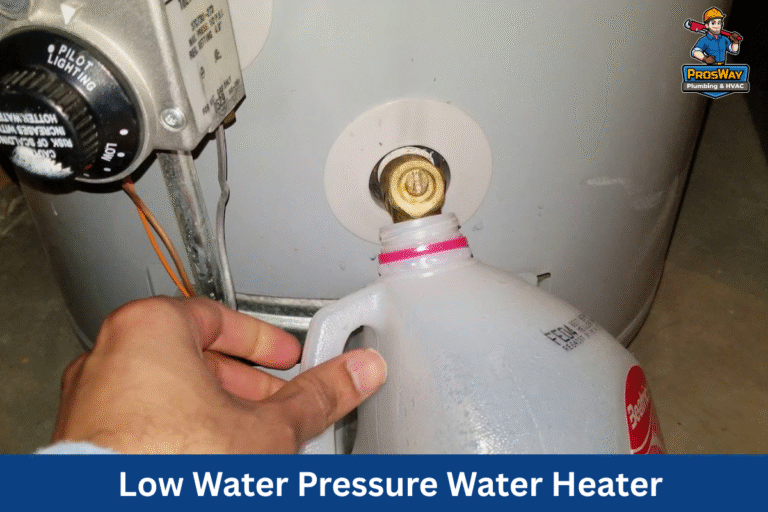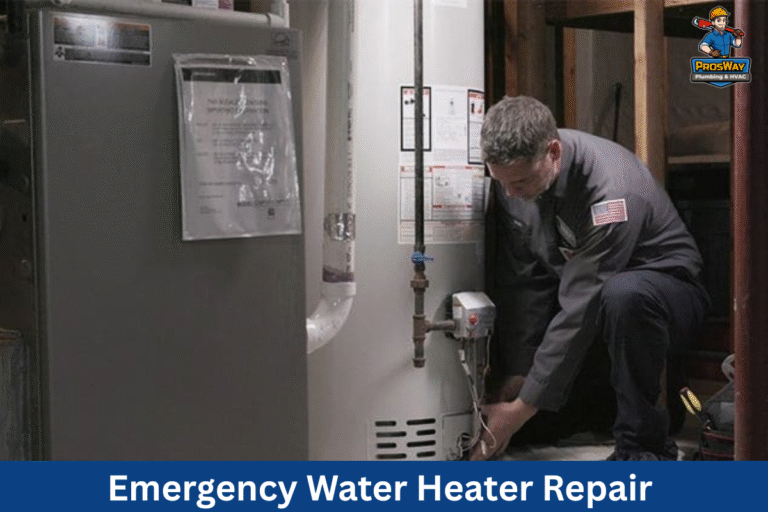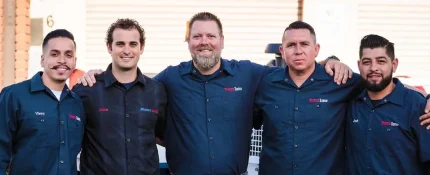When managing the maintenance of your property’s sewer system, understanding the various inspection methods available is crucial. Due to age, root intrusion, or ground movement, sewer lines can develop cracks, blockages, or complete failures over time. These issues can disrupt daily life and lead to costly repairs.
As a residential property owner in Northern New Jersey, you need reliable methods to maintain your sewer infrastructure. This article explains advanced inspection techniques, compares their effectiveness on technical and financial parameters, and guides you in selecting the method.
What Sewer Inspection Methods Are Commonly Used?
Modern sewer inspection methods offer precise assessments of underground infrastructure. Each technique has advantages based on the type of data collected and the defects it can detect.
Acoustic Technology for Pinpointing Leaks
Acoustic technology uses sound-detecting instruments to locate leaks and anomalies within sewer lines. When water flows through damaged pipes, it creates distinctive sounds.
By measuring sound intensity and frequency, technicians can pinpoint the location of a leak. This method is beneficial when obstructions or a murky environment hinder visual inspection.
The sensors detect subtle changes in sound patterns, even minor leaks detection before they worsen. This preventative capability makes acoustic technology excellent for ongoing maintenance.
Advances in software have enhanced device precision by distinguishing between flow noise and structural vibrations, thereby improving measurement accuracy.
Where Is Smoke Testing Most Useful?
Smoke testing involves injecting non-toxic smoke into the sewage system to identify leaks and breaches visually. As smoke escapes through even the most minor fissures, it provides clear evidence.
This method is particularly effective for detecting breaks not visible with CCTV or acoustic techniques, as the smoke trails on the surface reveal the locations of breaches.
Often used by municipalities and large maintenance companies, smoke testing provides a quick and comprehensive survey of extensive networks.
Check out this video: Sewer Infrastructure: A Guide to Inspections, Restoration, and Cleaning.
Its simplicity and ability to highlight multiple defects in one test make it a cost-effective solution. For homeowners, smoke tests are recommended when unexplained damp spots or sinkholes suggest a leak.
Dye Tracing to Verify Water Flow Paths
Dye tracing involves introducing fluorescent or colored dye into the sewer system. This method verifies that water moves as expected through the network and identifies areas of blockage.
The dye appears in maintenance holes or on the surface where water escapes, offering compelling visual evidence of misdirected flow. Dye tracing is especially effective when used with other methods.
For example, after a CCTV inspection suggests a blockage, dye tracing can clarify surrounding water flow dynamics. It is also non-invasive, reducing the risk of further damaging the infrastructure.
How Do Sewer Inspection Methods Compare in Effectiveness?
Effectiveness is measured by how precisely, quickly, and thoroughly each technique detects defects. Different methods have distinct strengths suited to various challenges, from simple blockages to complicated structural failures.
Precision in Locating Pipe Defects
Precision refers to the exactness with which a method identifies a defect’s location and nature. CCTV assessments provide clear images that enable technicians to pinpoint defects.
In contrast, acoustic technology detects leaks by capturing sound variations, though ambient noise can sometimes lead to false signals.
Dye tracing visually confirms water flow, complementing the other methods. The overall accuracy depends on both the technology and the operator’s expertise.
Modern robotic transporters with high-definition cameras can detect minute fissures that older equipment might miss. High resolution and precision lead to reduced chances of misdiagnosis.
How to Access the Speed and Thoroughness of Each Approach?
Speed is crucial for minimizing sewer system downtime. While CCTV inspections provide detailed views, they can be time-consuming in extensive or complex systems.
Acoustic and smoke testing offer quicker assessments over large areas. Robotic transporters strike a balance between speed and thoroughness by rapidly navigating complex networks.
Thoroughness is reflected in a method’s ability to evaluate the whole system—from main pipelines to branch lines. Techniques such as dye tracing and robotic transport provide comprehensive coverage.
For urgent issues, such as leaks or blockages, a faster method may suffice; for long-term maintenance, a detailed approach is preferable.
Comparing Reach and Access Capabilities Within Sewer Lines
Different methods vary in their ability to navigate challenging sewer environments. CCTV cameras work well in straight pipes but may struggle in areas with extreme bends or collapses.
Robotic transporters are designed to overcome these obstacles. Acoustic methods cover large segments since sound travels well, but they do not provide visual details.
While dye tracing effectively confirms the final exit or leak points. Often, a combination of methods is necessary for full access and accurate assessment, particularly in older or complex systems.
Why Consider Financial Aspects in Sewer Inspections?

Evaluating inspection methods from a financial perspective is as important as assessing their technical performance.
Effective maintenance protects your property and can reduce long-term costs by identifying problems early.
What Long-Term Value Do Inspections Offer?
Long-term value is measured by how early defect detection can avoid costly repairs and environmental hazards.
Although advanced inspections, such as high-resolution CCTV or robotic surveys, may seem expensive initially, they can lead to preventive repairs that ultimately save money.
Regular inspections reduce overall maintenance costs by catching issues early and reducing false alarms.
How Do Inspection Results Affect Repair Costs?
Detailed inspection reports help determine whether minor damages can be remedied with simple repairs or if extensive replacement is needed.
Early detection of minor root intrusions, for example, can be managed with targeted treatments rather than replacing entire pipe segments.
The inspection findings also help plan preventative measures such as adjusting water pressure or scheduling routine cleaning, thereby reducing long-term repair costs.
What Factors Should Guide Inspection Method Choice?
Choosing the right inspection technology means matching the method to your system’s unique needs, which are influenced by factors such as pipe material, age, size, and environmental conditions.
Factoring in Pipe Material, Size, and Age
Modern plastic or PVC pipes typically require only a basic CCTV inspection, as surface defects are easily identifiable.
Older clay or cast-iron pipes are more prone to deterioration and root intrusions and may require advanced methods.
such as robotic transporters. Larger diameter pipes with irregular surfaces often benefit from high-definition imaging.
While smaller pipes may be best inspected with acoustic sensors that detect subtle leaks. Sometimes, a combination—such as an initial acoustic test followed by dye tracing—is optimal.
Differentiating Inspections for Residential and Commercial Properties
Residential sewer systems are generally smaller and less complex, benefiting from straightforward methods like CCTV and acoustic Testing.
In contrast, commercial systems often have larger networks with multiple branches that require advanced techniques or a combination of technologies.
Such as robotic transporters with 3D mapping, to ensure complete coverage. Commercial inspections also typically require extensive, whereas residential reports tend to focus on immediate repair needs.
What Should You Expect During Sewer Evaluations?

Before an evaluation, it is essential to know what to expect. A well-prepared property and clear documentation can streamline the process and reduce delays.
How Should You Prepare Before an Inspection?
Ensure that access points such as maintenance holes or clean-outs are identifiable and unobstructed. Remove obstacles around these points.
And provide any historical data or previous reports to guide the technicians. Securing pets and notifying neighbors can also help if areas need to be temporarily closed.
A clear plan for any immediate repairs recommended during the evaluation can further reduce additional costs.
The On-Site Process for Camera-Based Inspections
For CCTV inspections, the technician will introduce the equipment and explain the process. The camera is inserted into the sewer line to capture real-time internal images.
Technicians may pause the inspection to record still images or measurements of detected issues. The session typically lasts one to two hours, depending on the complexity and length of the pipe.
The On-Site Process for Non-Visual Detection Methods
For acoustic Testing, smoke testing, or dye tracing, sensors are placed along suspected leakage areas. Technicians monitor sound readings, smoke escape, or dye trails to identify leaks or breaches.
Although these methods do not provide real-time visuals like CCTV, they complement visual techniques and help confirm defects that might be hidden in walls or underground.
What Do You Get After the Inspection?
Following the evaluation, detailed digital reports are provided, including video footage, sensor readings, and annotated images.
Professionals will walk homeowners through the findings, clarifying which defects are critical and which may be monitored over time.
Diagrams and measurements help illustrate the condition of the pipes, guiding the prioritization of repairs and budget allocation.
How Can You Choose the Right Sewer Inspection Method?
Choosing the correct method involves assessing your system’s condition, potential risks, and maintenance goals.
This final phase requires asking the right questions, weighing the pros and cons, and matching the technology to your specific circumstances.
What Should You Ask Before Choosing an Inspection Method?
Before scheduling an inspection, ask about the team’s experience with similar systems, the specific technologies they use, and the level of detail in their reports.
Inquire how their findings will influence repair recommendations and if follow-up assessments are offered. Key questions include:
What experience do you have with similar sewer systems?, Which technologies will you deploy for my inspection?, How do you document and report defects? or How will inspection results influence repair decisions?
What Are the Pros and Cons of Each Method?
Each method has benefits and drawbacks. CCTV provides high-resolution visuals but may struggle in areas with obstructions. Acoustic Testing is fast and effective at identifying leaks but sometimes needs visual confirmation. Robotic transporters offer comprehensive data but may have higher costs. Balancing immediate costs against long-term benefits is crucial when making a decision.
Which Method Fits Your Current Pipe Issues?
Your choice should address known or suspected issues. For minor blockages or leaks, CCTV combined with acoustic Testing might be sufficient. For recurring or severe problems, investing in a robotic and dye-tracing solution can be more effective. Setting clear priorities helps target the inspection and tailor the repair plan, supporting long-term system integrity.
Frequently Asked Questions
How often should I schedule a sewer inspection for my home?
For residential properties, it is recommended to conduct an inspection every two to three years. However, if you notice recurrent blockages, unusual odors, or wet spots, an earlier inspection may be necessary.
Can sewer inspection methods prevent costly repairs?
Yes, regular inspections can detect minor issues, such as cracks or root intrusions, early on, allowing for timely, cost-effective repairs rather than major emergency fixes.
What is the typical duration of a sewer inspection using CCTV technology?
CCTV inspections generally take between one to two hours, depending on the system’s length and complexity.
Is acoustic Testing as reliable as CCTV inspections?
Acoustic Testing reliably detects leaks through sound vibrations, but it does not provide visuals. Combining acoustic data with CCTV footage yields a more complete evaluation.
How do advanced robotic transporters improve the inspection process?
Robotic transporters navigate bends and vertical sections to capture high-definition visuals and sensor data, creating detailed 3D maps that enhance defect detection and repair planning.
Are there additional costs if issues are found during an inspection?
The initial fee covers the diagnostic process. If significant issues are discovered, additional repair costs may be incurred, and detailed reports will outline the subsequent expenses.
How do I know which inspection method is best for my property?
The ideal method depends on factors such as your sewer system’s age, material, and complexity, as well as your repair history. Consulting with a qualified sewer professional will help determine the most suitable combination of techniques for your specific needs.
Final Thoughts
Various sewer inspection methods is crucial for maintaining the long-term health of your system. Whether you choose CCTV, acoustic Testing, smoke testing, dye tracing, or robotic transporters, each technique offers unique advantages. Consult trusted local experts, such as ProsWay Plumbing & HVAC, to determine the best inspection strategy for your home. Regular maintenance and planned inspections are key investments that help avoid emergencies and preserve your property’s integrity.
Need a Sewer Inspection? Call ProsWay
Get expert guidance tailored to your property’s needs. Call us now at (862) 260-5870 or Book Online today to schedule a reliable, no-hassle inspection that helps prevent costly repairs.









